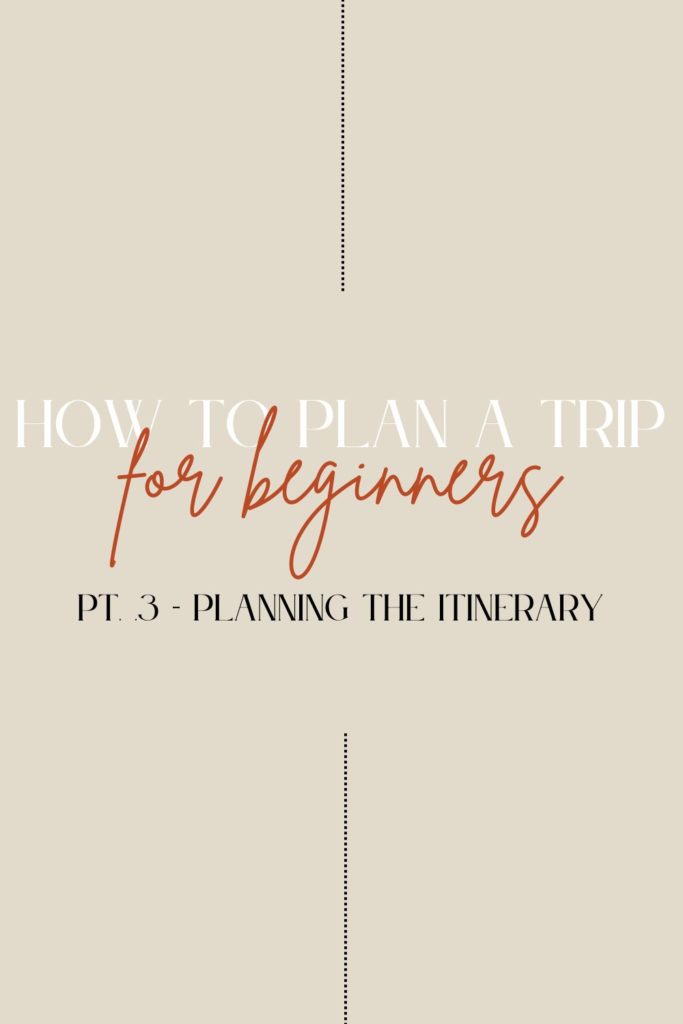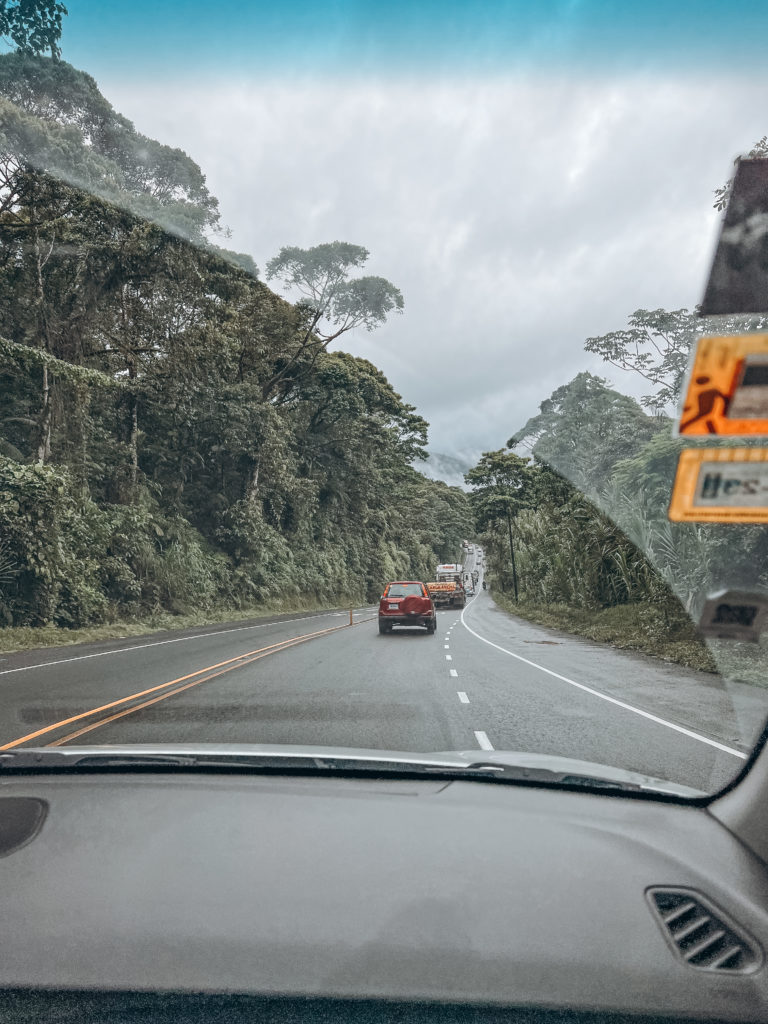How to Plan a Trip for Beginners Pt. 3 – Planning the Itinerary
You’ve figured out where you’re going, what you’re going to do while you’re there, and now it’s time to work on planning the itinerary. This part of the trip planning process is probably my favorite, but also the most time consuming. It takes time researching and puzzle piecing everything together, but at the end of it you’ll have an awesome trip itinerary. So, let’s get into it.
How to Plan a Trip for Beginners Pt. 3 – Planning the Itinerary

Before laying out your itinerary, there’s a few bits of research you need to do first.
How Many Days?
The first thing you need to decide is how much time you will be spending in your destination(s). For example, if you’re spending one week in France, are you doing 4 days in Paris and then 3 Days in Bordeaux, or are you spending the full week in Paris. The number of days you are spending in each location will also kind of set the pace for your trip. Spending a full 7 days in Paris would mean having ample time to see all the major sites plus, having plenty of time to wander the arrondissements and sit at cafes sipping lattes. While with 4 days you could see all the major sites but would have less time for wandering and people watching. Take a look at your things to do list you compiled from part 2 of this series, to see what makes sense.
What to do Each Day
When it comes to planning an itinerary, the most important part is making sure you are grouping activities/attractions that are in a relatively close vicinity together. This keeps you from wasting time running back and forth all over the city. There are two ways you can go about this.
Use Someone Else’s Itinerary Plan
If you’re not really sure how to structure your itinerary, check out a few travel blogs to get a baseline for an itinerary. For example, if you have a week to spend somewhere, Google “1 week itinerary for x destination.” Posts that rank on the first page of Google are usually pretty detailed and filled with important logistical info. You can also use Pinterest to search for itineraries. Use either to create an outline for your itinerary.
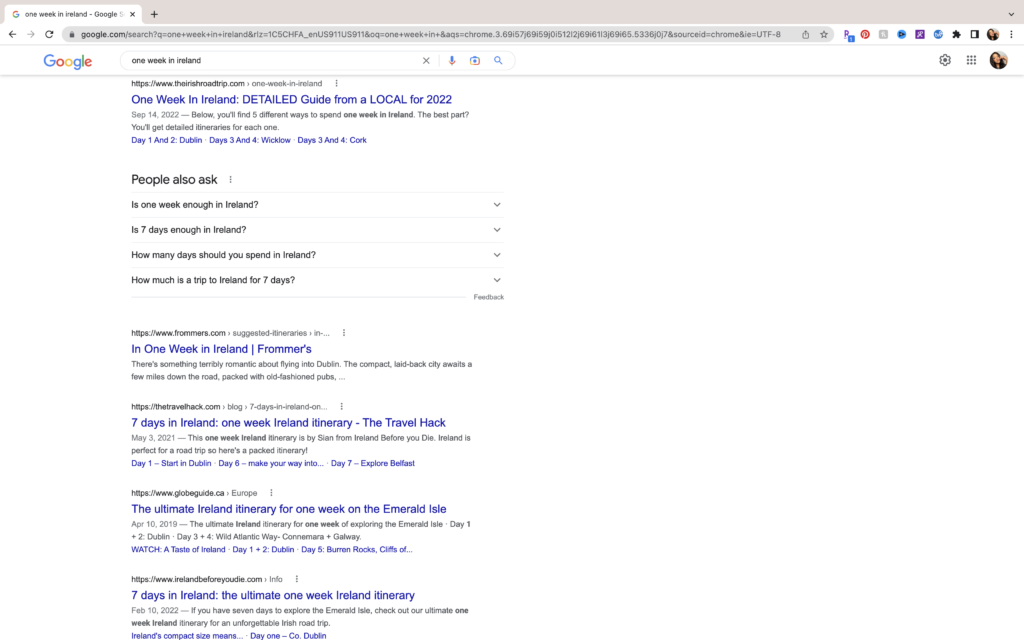
Planning an Itinerary Using Google Maps
Using Google Maps, you can bookmark all the locations you want to visit. This gives you a visual look at all the places you want to visit and makes it easy to group your activities.
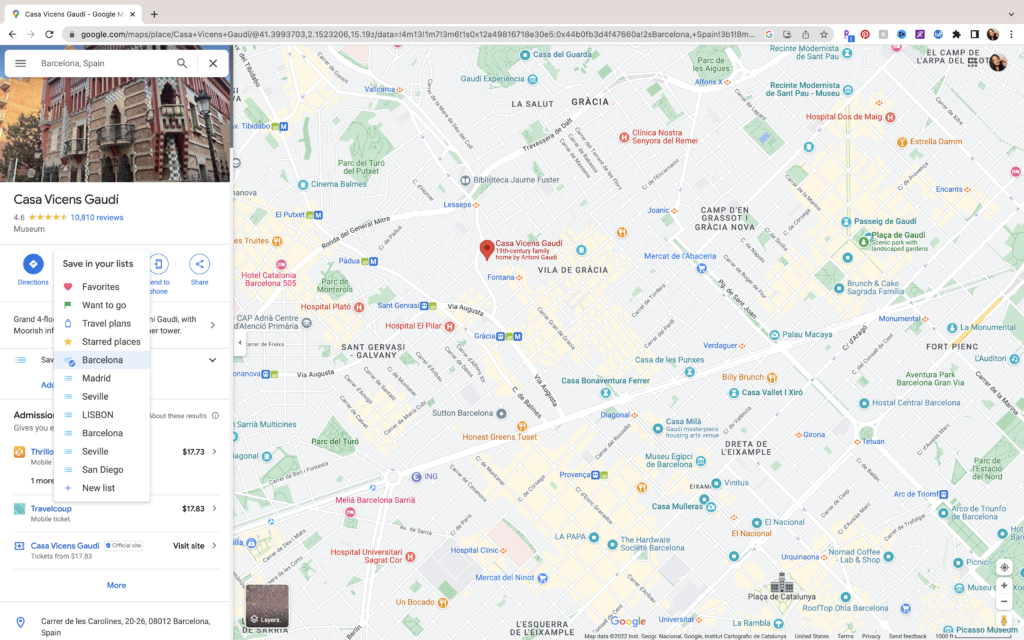
I use a combination of options 1 and 2. I will find a baseline itinerary to lay the groundwork. Then, if there’s different things I want to do compared to someone else’s itinerary, I use Google Maps to see where my plans fit in. Reorganize your “things to do”” list so that things are grouped appropriately.
The next part is especially important for my jam-packed itinerary makers.
How Much Time Do You Need at Each Place?
When building your itinerary, you have to make sure you actually have time to fit in all the things you want to do. In order to do this, you can simply google “how much time at x attraction.” Usually, there’s a blog post or forum letting you know how much time you can expect to spend at a certain place. A lot of the time they’ll include a “quick browse” time and a “take it all in” time. Go with the one that makes the most sense to you.
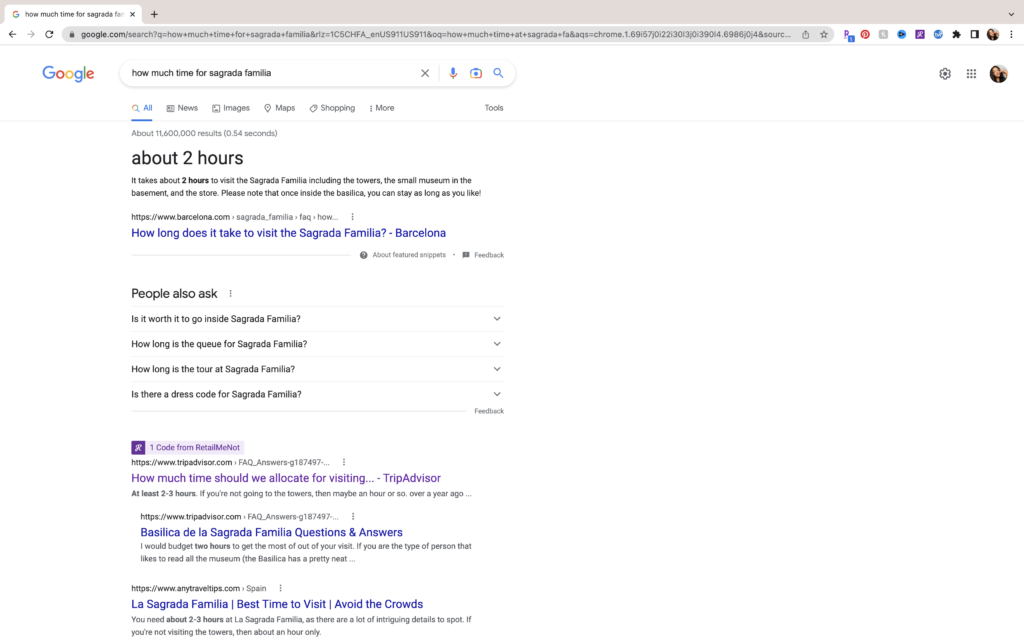
You can also google the attraction and look at the Google generated sidebar. Towards the bottom near the “popular times” graph, there’s sometimes a little stopwatch with the phrase “People typically spend up to x amount of time here.” On your list of things to do, add the estimated time you’ll need to visit.
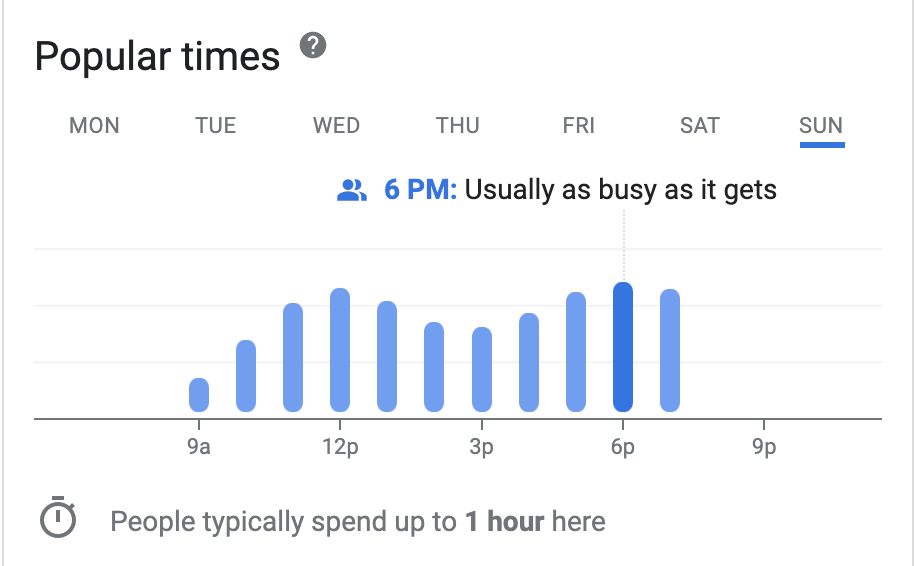
What are the Operation Hours?
Next, you’ll want to take a look at opening hours, closure notices, tour times and so forth. While planning my upcoming trip to Spain and Portugal, I found out that most attractions in Seville are closed on Sundays and castles in Sintra are closed on Mondays. So, I rearranged and planned my itinerary accordingly. You don’t want to plan this awesome itinerary only to find out that the restaurant you wanted to eat at is closed on Tuesdays or that incredible church you wanted to see is closed for an important holiday. Note the opening and closing times on your things to do list.
How Long Will it Take to Get Around?
Once all of the above is complete, you’ll then need to figure out how much time it will take you to get from place to place. If you’re planning a loosey goosey itinerary, this isn’t all that important. However, if you’re short on time and trying to squeeze a bunch in, it’s good to know if it’s going to take you 5 or 15 minutes to get from place to place.
Using Google Maps or your routing app of choice, enter your first point of interest to your second point of interest. Compare walking times to public transport times to driving times. Sometimes it makes more sense to save the money and walk, other times it’s way more convenient to hop on the metro or in a taxi. Make note of the time between destinations and the mode of transport.
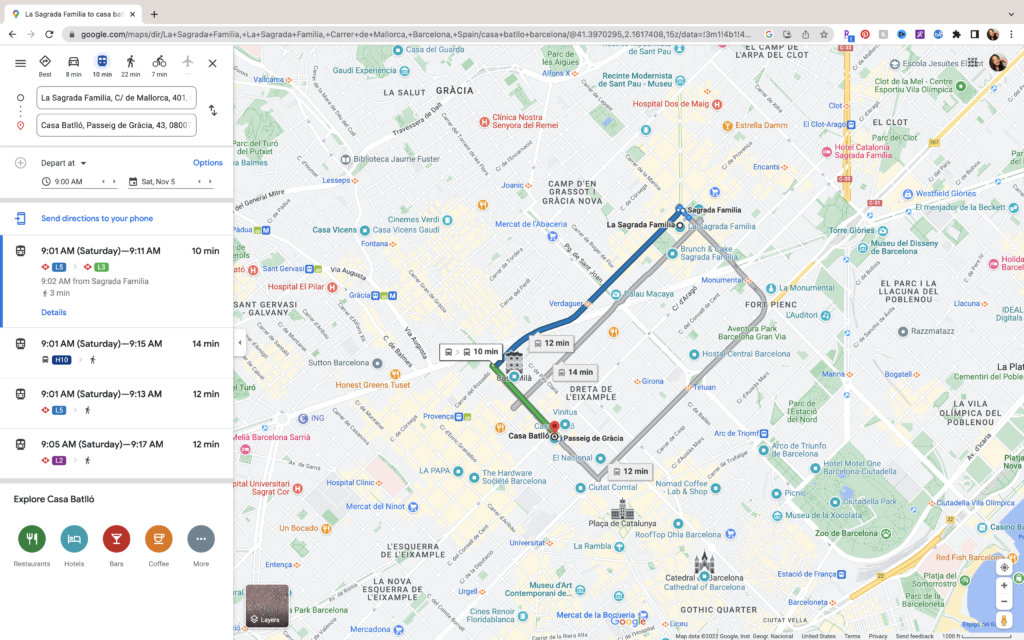
Also, you’ll want to check transport schedules if you’re planning on hopping around to different cities or countries during your tip. Rome2Rio is a good site to help you search multiple modes of transport available to get you from point a to point b.
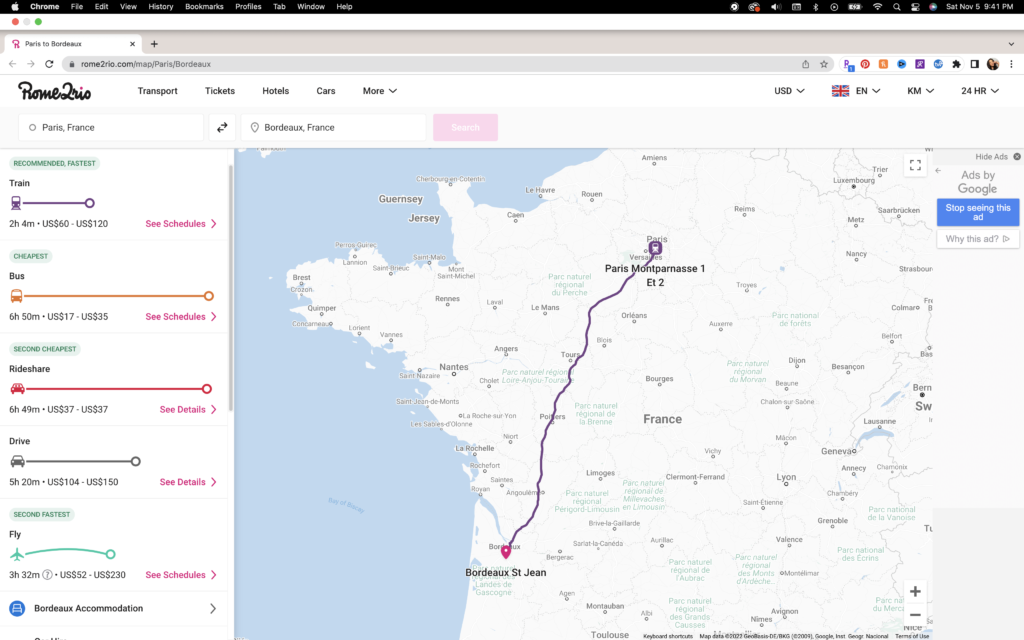
What’s the Vibe?
An important question to ask yourself is, “What kind of trip do I want to have?” For a relaxing/leisurely vacation, you can build a loose itinerary with a few set times for special dinners and tours.
If you’re short on time and you want to see all that you can, well then a more structured itinerary is best. I’m a structured itinerary kind of person, so much so that I created a Canva travel planner template. It’s what I use when planning trips and to send itineraries to my friends. If you’re interested in getting your hands on it, all you have to do is sign up for my newsletter below!
With all these details, you can now efficiently plan your itinerary. See below for some samples of how you could structure your itinerary.
Itinerary Planning Samples
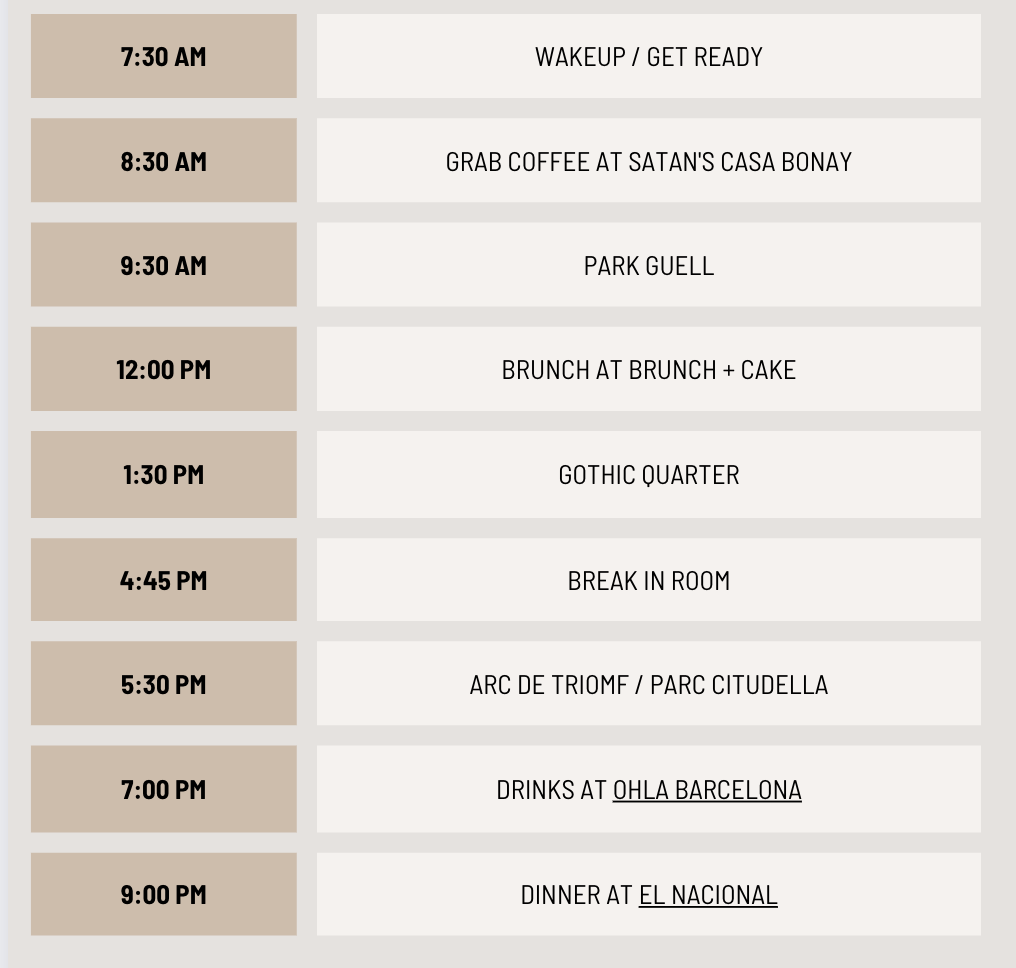
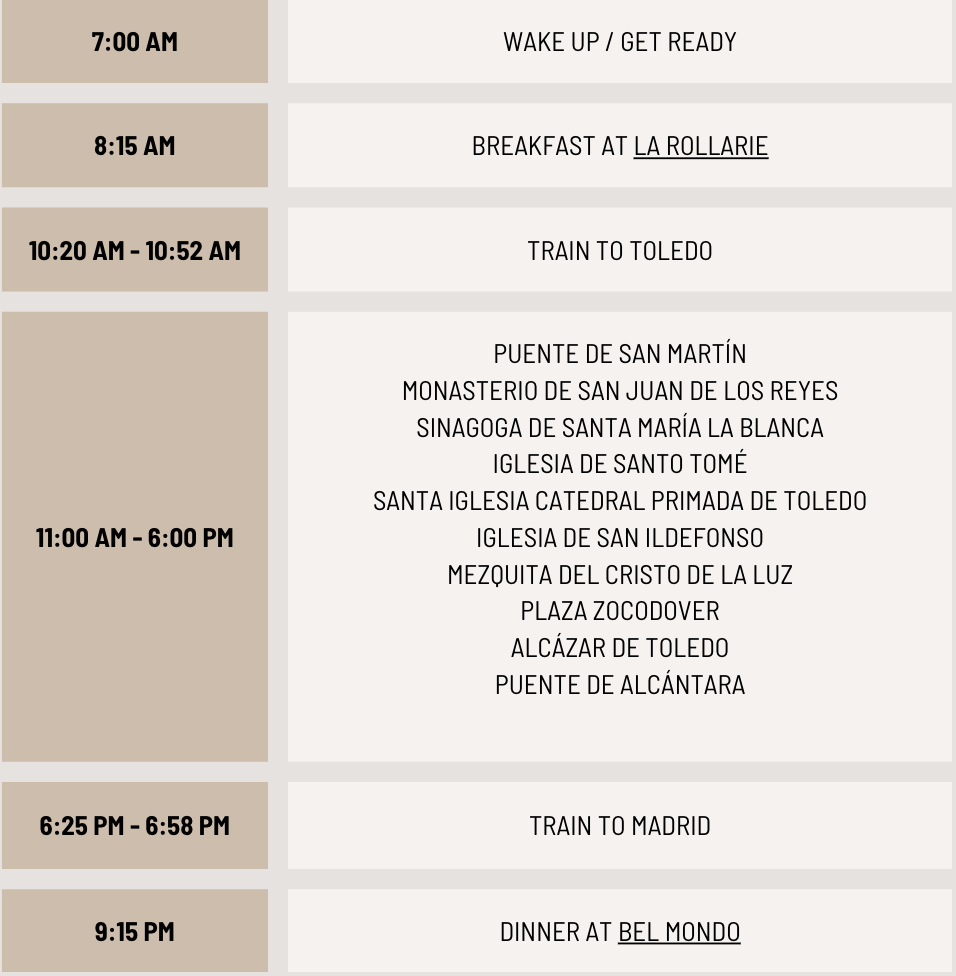
General Itinerary Planning Tips
- Get to popular attractions when they first open. If getting pictures is important to you and you don’t want a bajillion people in them, being one of the first people to enter will help you avoid crowds.
- For planning a meal at a restaurant, the average dining time for a party of 2 is 45 minutes and a party of 4 around 1 hour. However, if you’re visiting a popular restaurant check what Google says is the average amount of time spent at that restaurant. Also, you’ll find in some countries it takes longer to dine as there’s no haste to get people in and out.
- Try to schedule in some wandering time. Even if it’s just an hour, give yourself some time to pop into a cute cafe you may stumble upon or to browse a shop. This is in line with the TikTok sound that says, “I’m all for going with the flow, but what time does the flow start?”
- If you’re looking for a mix of structured and flexible, you can plan a super structured daytime itinerary, but then let the night take you where it may. A lot of tourist attractions are open 9:00AM – 5:00/6:00 PM. Plan those hours accordingly and then have the rest of your day open for whatever.
Found this helpful? Pin it for later!
